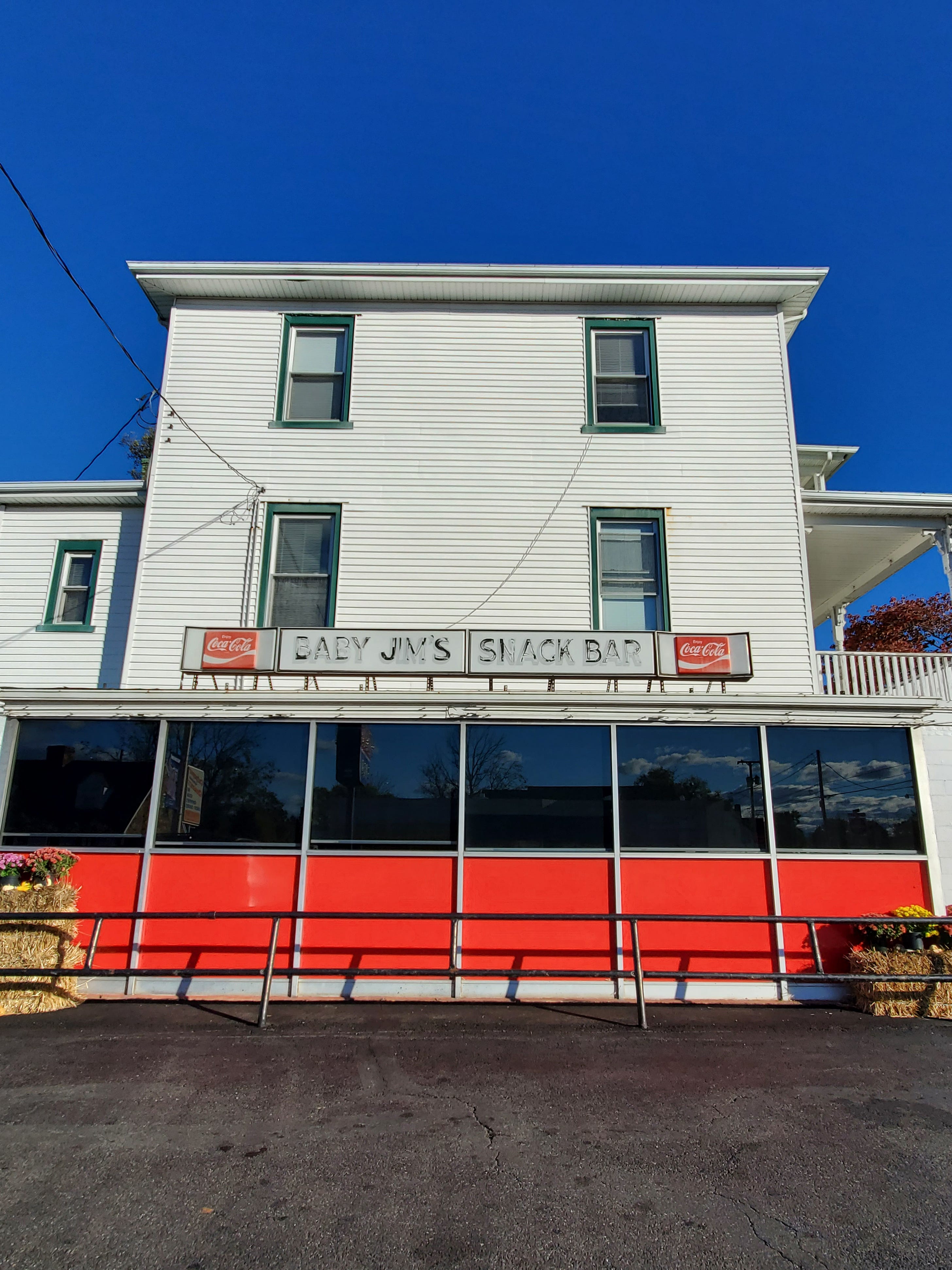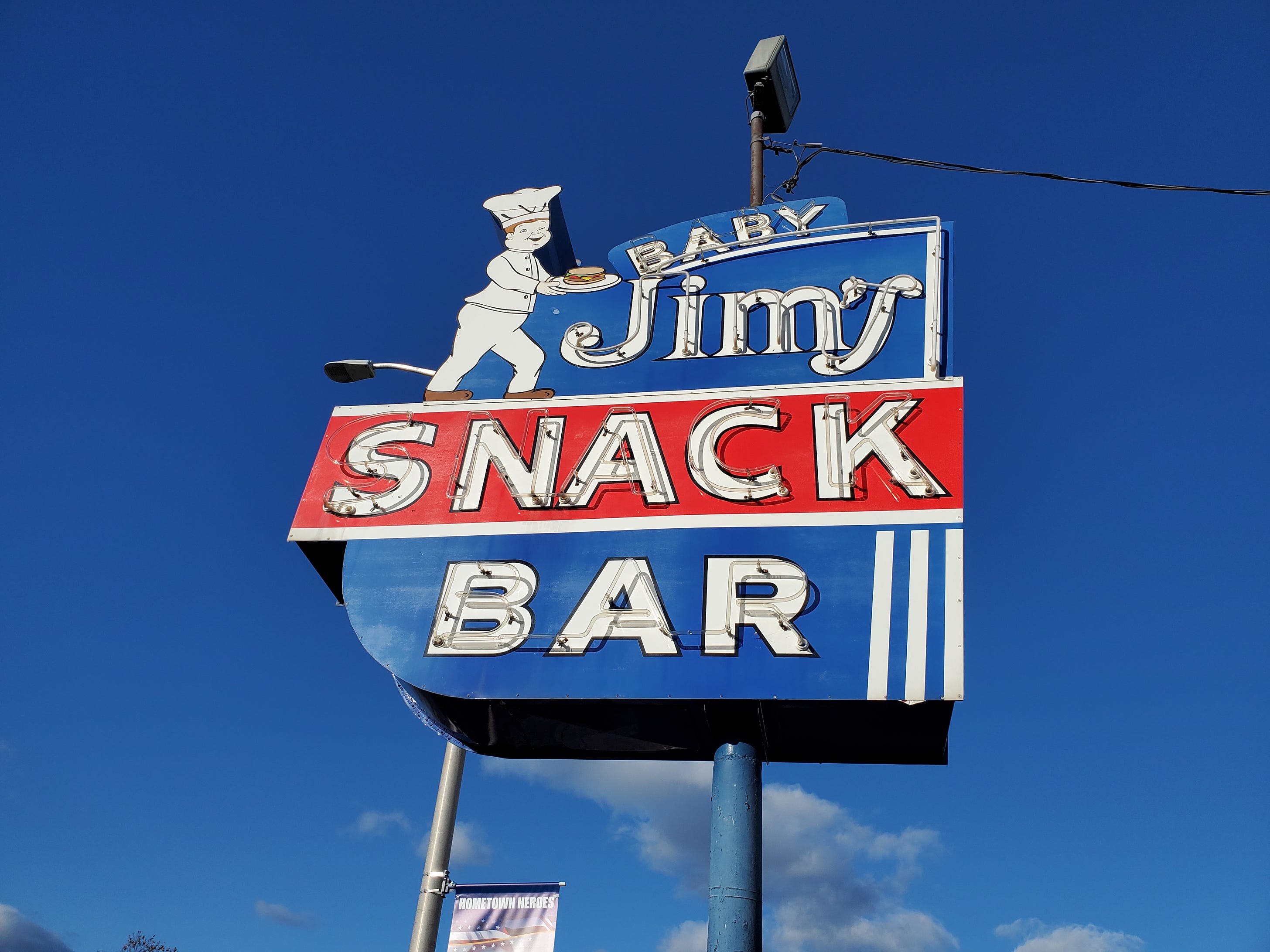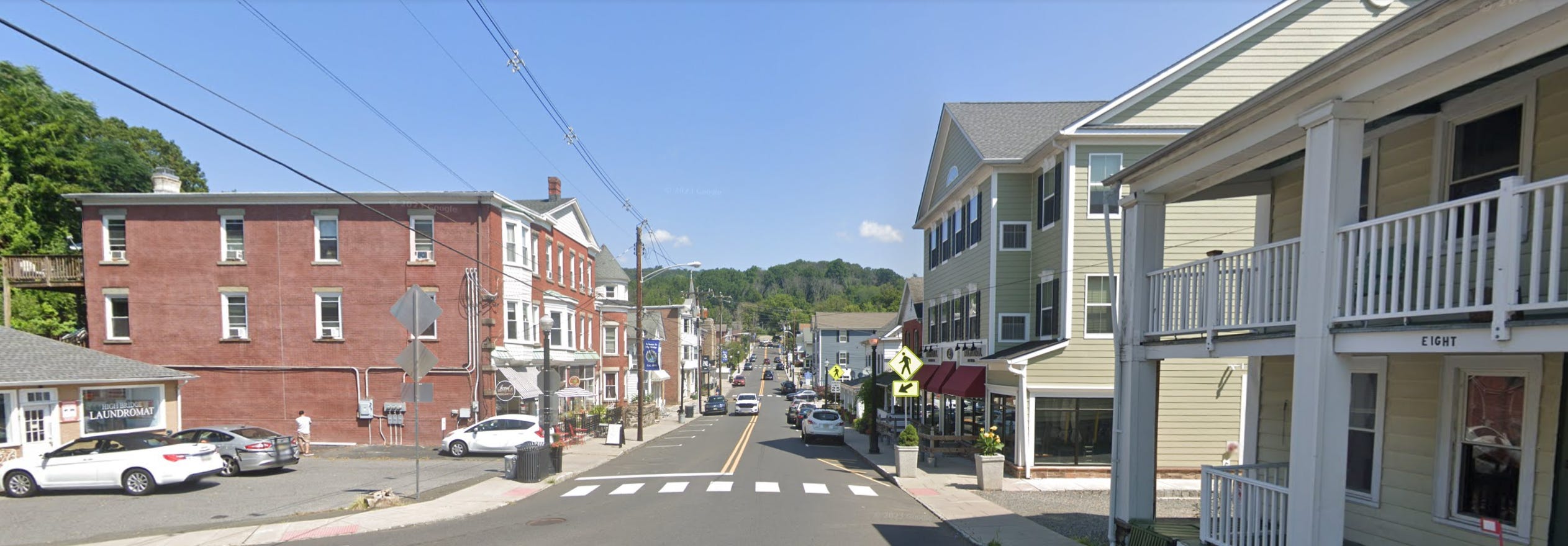We Don't Build Them Like We Used To (And Thank God?)
Baby Jim’s, a burger and milkshake joint, was a classic, long-running business in Culpeper, Virginia—one of my favorite towns—dating back to 1947 and residing for most of its life in the bottom level of an 1875 apartment building. Here’s the building and the neon sign: The building was catastrophically damaged in a fire back in July, and was completely demolished in October (the sign was saved). That’s a real shame. There’s a chance the business will return in another space, but there’s so much history in that spot. Places like this are part of people’s mental maps of places. And when these legacy structures go, they’re rarely replaced with something that looks and feels the same. But maybe that’s a good thing. I want to share a long excerpt from a local news story about the fire:
Well, I wouldn’t want to live in a building like that. This structure was solid as anything, even after nearly 150 years, and any number of small renovations and remodels. But that extremely solid design also meant that it was very difficult to put out the fire. Break through plaster, peel up the roof, dense smoke and intense fire from thick solid wood. I suppose fire stops could have been included holding all the other workmanship the same, but even then the fire might have been catastrophic to the structure (though less dangerous for any occupants). Thank God nobody did die. But 12 people, two of them children, were displaced. A lot of safety regulations add cost to buildings—sprinklers, multiple stairwells, fire stops and firewalls. Probably many others. One way to respond to increases in construction costs is to not build. This is one factor in the reduced number of small-scale buildings like this one. Another way to handle increased costs is to build more units to spread out those costs. Once an expensive building element, like sprinklers, is triggered, it makes sense to build as much as you can until the next big regulation kicks in. Mid-sized buildings are reduced because they’re just on the “wrong” side of the sprinkler requirement; 5-over-1s are popular because they go right up to the point where all-masonry construction is triggered. This increase in scale and size has effects on land use and the built environment, since it often doesn’t fit with the scale of traditional Main Streets. It also affects how solid, sturdy, or high-quality buildings feel. A lot of new buildings feel flimsy and cheap. They are probably not going to last anywhere near as long as these solid old workhorse buildings. They lack a lot of the “character”—idiosyncrasies or small imperfections—of old buildings. This can make them feel detached and impersonal. In an Atlantic article headlined “Stop Fetishizing Old Homes,” zoning reformer and housing advocate Nolan Gray writes:
The first time I heard this argument, I didn’t like it. It’s hard to believe these flimsy new buildings are better. Cheap windows, paper-thin walls, builder-grade fixtures and finishes—they’re practically falling apart before you even move in! But that just isn’t true, overall. And the accumulation of deferred maintenance and, often, poorly done renovation work means that a lot of buildings that look great from the outside are in a deteriorated state and would be extremely expensive to fully renovate and modernize. I’d like us to build more stuff—especially in old towns, like whatever will eventually replace the Baby Jim’s building—that fits in visually and aesthetically with the town. Sometimes, this happens. There’s at least one new building in this Google Earth view of High Bridge, New Jersey’s Main Street, for example. Not bad! But dislike of cheap new buildings with lackluster styling isn’t really a reason to glorify the very ordinary buildings of previous times, especially when a large number of them are fire traps like this one in Culpeper. I definitely feel the tension here, between nostalgia and history and memory and mental maps on the one hand—the things that make a place feel settled and real and in continuity with itself over time—and the seemingly mundane and technocratic question of how to make sure these places also enjoy the benefits of decades of advancement in construction safety. In a lot of ways, this is a subset of the questions I think about in regard to development and urban growth in general. What do you think? Related Reading: Thank you for reading! Please consider upgrading to a paid subscription to help support this newsletter. You’ll get a weekly subscribers-only piece, plus full access to the archive: over 800 pieces and growing. And you’ll help ensure more like this! You're currently a free subscriber to The Deleted Scenes. For the full experience, upgrade your subscription. |
Older messages
Can An Urbanist Be A Conservative?
Monday, November 27, 2023
Or, does urbanism belong to the left?
The Freedom To Stop
Saturday, November 25, 2023
What walkability does to the texture of life
New and Old #137
Friday, November 24, 2023
Friday roundup and commentary
Give Thanks To The Lord, For He Is Good
Thursday, November 23, 2023
Thankfulness, urbanist-adjacent thoughts on home, and food!
Fossil Records and (Former) Neighborhood Character
Wednesday, November 22, 2023
What Do You Think You're Looking At? #137
You Might Also Like
6 Most Common Tax Myths, Debunked
Saturday, March 8, 2025
How to Finally Stick With a Fitness Habit. Avoid costly mistakes in the days and weeks leading up to April 15. Not displaying correctly? View this newsletter online. TODAY'S FEATURED STORY Six of
Weekend: My Partner Can’t Stand My Good Friend 😳
Saturday, March 8, 2025
— Check out what we Skimm'd for you today March 8, 2025 Subscribe Read in browser Header Image But first: this is your sign to throw away your old bras Update location or View forecast EDITOR'S
Your Body NEEDS to Cardio Row! Here Are Some Options.
Saturday, March 8, 2025
If you have trouble reading this message, view it in a browser. Men's Health The Check Out Welcome to The Check Out, our newsletter that gives you a deeper look at some of our editors' favorite
What Do You Really Need?
Saturday, March 8, 2025
Is opposing consumerism lacking gratitude? ͏ ͏ ͏ ͏ ͏ ͏ ͏ ͏ ͏ ͏ ͏ ͏ ͏ ͏ ͏ ͏ ͏ ͏ ͏ ͏ ͏ ͏ ͏ ͏ ͏ ͏ ͏ ͏ ͏ ͏ ͏ ͏ ͏ ͏ ͏ ͏ ͏ ͏ ͏ ͏ ͏ ͏ ͏ ͏ ͏ ͏ ͏ ͏ ͏ ͏ ͏ ͏ ͏ ͏ ͏ ͏ ͏ ͏ ͏ ͏ ͏ ͏ ͏ ͏ ͏ ͏ ͏ ͏ ͏ ͏ ͏ ͏ ͏ ͏ ͏ ͏ ͏ ͏ ͏
“Otway” by Phoebe Cary
Saturday, March 8, 2025
Poet, whose lays our memory still / Back from the past is bringing, ͏ ͏ ͏ ͏ ͏ ͏ ͏ ͏ ͏ ͏ ͏ ͏ ͏ ͏ ͏ ͏ ͏ ͏ ͏ ͏ ͏ ͏ ͏ ͏ ͏ ͏ ͏ ͏ ͏ ͏ ͏ ͏ ͏ ͏
Cameron Diaz Returned To Fashion Week In A Fabulous Little Red Dress
Saturday, March 8, 2025
WOW. The Zoe Report Daily The Zoe Report 3.7.2025 Cameron Diaz's Asymmetrical Red Dress Lit Up The Stella McCartney Fall 2025 Show (Celebrity) Cameron Diaz Returned To Fashion Week In A Fabulous
5-Bullet Friday — Breaking the Sperm Bank, D-Cycloserine, Tools for Grumpy Elbows, and Wisdom from Seth Godin
Saturday, March 8, 2025
“If you're feeling creative, do the errands tomorrow. If you're fit and healthy, take a day to go surfing. When inspiration strikes, write it down." ͏ ͏ ͏ ͏ ͏ ͏ ͏ ͏ ͏ ͏ ͏ ͏ ͏ ͏ ͏ ͏ ͏ ͏ ͏ ͏
Inside Alex Pereira's Training for Saturday's UFC 313 Showdown
Friday, March 7, 2025
View in Browser Men's Health SHOP MVP EXCLUSIVES SUBSCRIBE Inside Alex Pereira's Training for Saturday's UFC 313 Showdown Inside Alex Pereira's Training for Saturday's UFC 313
Update Your Android Devices Now 🚨
Friday, March 7, 2025
This TikTok Cleaning Method Might Have Broken My Fan. The security update includes fixes for two zero-day exploits. Not displaying correctly? View this newsletter online. TODAY'S FEATURED STORY
EmRata's Itty-Bitty Bikini Just Brought Back This "Cheugy" 2010s Trend
Friday, March 7, 2025
Plus, everything you need to know about Venus retrograde, your daily horoscope, and more. Mar. 7, 2025 Bustle Daily New books from Emily Henry, Karen Russell, and Kate Folk are among Bustle's best


